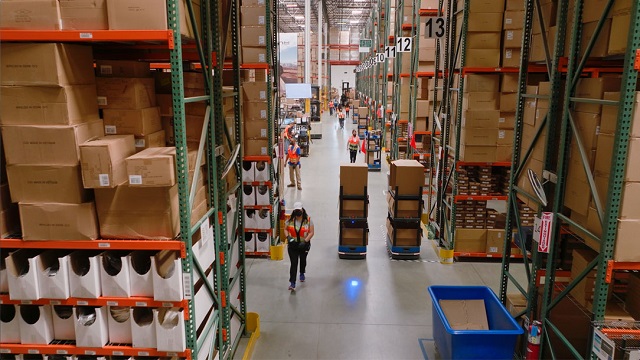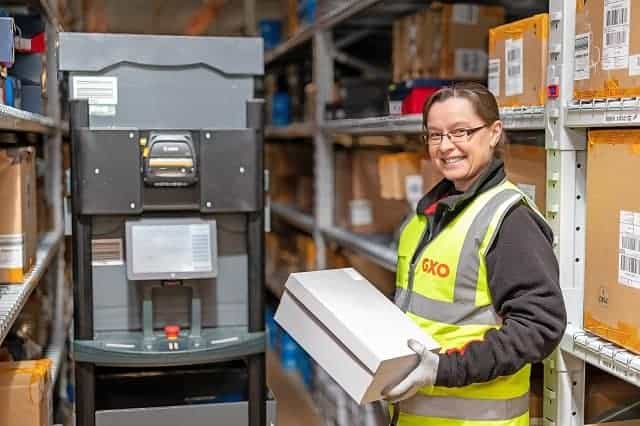Single order picking is a type of picking system where orders are fulfilled by manually picking each item directly from an open case, bin or storage box. Other types of single order picking are known as split case picking or each picking, where pickers pick items needed for one order at a time — making this a simple, reliable and accurate way for businesses to complete customers’ orders.
How single order picking works

The single order picking system is quite similar to shopping at a local grocery store where customers take a cart and fill it with items from their shopping list. Pick lists are prepared, printed and handed over to workers who then move around the warehouse picking out items one at a time.
Since this results in a lot of travel time around the warehouse, single order picking works best for small warehouses that typically handle a few orders every day. The lists are used during packing and shipping to confirm that the correct products and quantity have been picked.
Benefits of single order picking
The simplicity of this picking system also makes it inexpensive to implement and execute. Since order fulfillment can be done manually and requires minimal technology, smaller warehouses can use this system when starting out. Also, it’s quite easy to train employees on the single order picking process, and the system is less prone to errors.
Single order picking is a good fit for warehouses with a high number of SKUs but low pick amounts per SKU. It also works well in situations where there are more picks per order than number of orders.
How to optimize single order picking

With e-commerce sales rising each year and consumers demanding same-day, 1-day and 2-day shipping services, companies need an efficient and cost-efficient order picking system that is tailored to meet operational and business needs. Since picking accounts for 55% of warehouse costs, getting it right can help companies improve their bottom line while ensuring customer satisfaction.
While single order picking is a viable system for most order fulfillment operations, it is labor-intensive. Travel time is directly proportional to the number of items in an order and remains a major bottleneck for warehouses using the split case picking system. The more orders a warehouse receives, the greater the travel time and the number of products that must be handled and processed. This translates into more labor costs.
To offset these disadvantages, companies will need to focus on increasing warehouse productivity, picking speed and accuracy while reducing or eliminating operator travel for single order picking systems.
Optimize storage layout
Industry estimates suggest that walking or moving products around consumes as much as 60% of total pick and pack time, resulting in increased labor costs and time spent on non-productive tasks. Research shows that you can reduce travel times around your warehouse by 17-34% if you optimize picking routes.
These routes should be optimally designed to enable workers systematically work their way through their pick list and end up at their workstations. Orders on the pick list should be arranged in line with the layout of the storage bins to eliminate back-tracking when retrieving items.
Optimally place fast-moving SKUs
High-velocity SKUs should be placed in highly accessible locations where pickers can quickly and easily reach them. This significantly reduces overall travel time. Since picking frequency of items can change with consumer demand and seasonality, warehouse managers should constantly review their stock to determine what the fastest-moving products are.
Zone similar SKUs
Creating picking zones is a viable way to reduce travel time and increase productivity and efficiency. The 80/20 rule also applies in order fulfillment operations, where 80% of orders picked are from 20% of the inventory. Identifying this 20% and placing them in a zone nearest to pickers’ workstations can significantly reduce walking time.
If particular items consistently show up in customers’ orders, it’s a good idea to group such SKUs and place them in a separate zone. With this approach, pickers intuitively know which area to visit for these items and orders rather than consulting the storage map each time they need to pick an item.
Pick directly to a carton
Minimizing the number of hands a SKU goes through before shipping can reduce picking costs. Rather than setting up a dedicated packing area, companies can have their pickers place products directly into the shipping carton. This eliminates sorting and packing activities and reduces packaging resource needs.
A tool that does it all
Collaborative mobile robots make it easy for order pickers to place items for orders directly into bins and containers, while optimizing pick routes in real-time to reduce travel time and keeping associates on-task for increased productivity.
Choosing the right picking method
To make single order picking work for your fulfillment facility, you need to use a multifaceted approach that prioritizes accuracy, speed, and efficiency. Scaling can also become a problem when there are increased order volumes or sudden changes in market demands and order profiles.
Fortunately, many warehouse management systems (WMS) support single order picking, making it possible to automate most picking activities. Despite this, split case picking isn’t a good fit for all fulfillment operations, particularly when minimizing labor cost is a major objective. Understanding the nature of your inventory as well as the trends in customers’ demands can help you choose the right picking method for your facility.
Positioning your warehouse for success requires you to carefully choose an order picking system that can efficiently meet current and projected demand requirements. The picking system you choose should depend on your warehouse goals and KPIs.
If reducing lead time is an objective, batch picking is a better fit for your operations. Choosing the right picking system can give you an edge over the competition, increase customer satisfaction and retention and significantly improve your bottom line.
Visit our warehouse order picking guide for more information on the types of warehouse order picking, best practices for efficient order picking, and equipment and technologies that can improve accuracy and efficiency. Interested in more? Let’s discuss the solution that’s right for you. Contact us today.


